Juniors Bryce Foshee and Andrew Rieker explore rocket science
Bryce Foshee awed by first rocket launch
The experiments, chemicals and methods used in this blog are not recommended for those without a full understanding of reactions and rockets. Before attempting to build rockets or use any chemicals, proper research and safety precautions must be applied. For further reference on rockets or rocket-building, read “Rocket Manual For Amateurs” by Captain Bertrand Brinley, also apply to join the new Fresno Christian Rocket Program by contacting Bryce Foshee or Andrew Rieker.
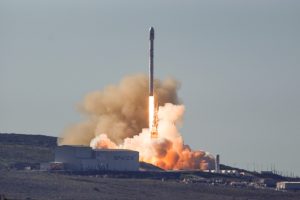
Behind a hill in Lompoc, CA, propellant pumped to 1,000 psi surged through nine Merlin 1D rocket engines. At 10:54 a.m., Jan 14, 2017, Falcon 9’s hold-down clamps released and 614 tons floated on fire and smoke.
Three miles away, a white tower, like a candle held upside down, ascended into view. The sound was powerful rather than loud; it shook the ground and filled the air with a crackle that headphones cannot imitate.
I watched a 70 meter-tall rocket accelerate past the sound barrier. With binoculars, I saw main engine cut-off and the staging and orbital insertion of ten satellites traveling almost five miles a second.
Whether a Saturn V, Space Shuttle, Soyuz, Sidewinder or model rocket, I had seen rockets shoot skyward countless times, on TV. But a personal encounter produced a different effect: I wanted to do more than watch rockets liftoff.
If you’re a sports fan, you know how football or soccer or basketball is played. But if you really develop a passion for a sport, chances are you will want to start playing it.
To see Newton’s Third Law, not in a textbook, but lifting a vehicle taller than any building in Fresno, blew my mind.
Rocket science is a science, and that means it is replicable, even in a backyard, even by someone who hasn’t taken a high school chemistry class. But like sports, rocketry is not best when done alone. Luckily for me, someone else at FCS wanted to reach for the skies.
Andrew Rieker launches rocket, Sept. 25, 2017
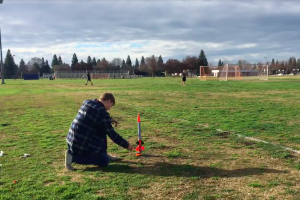
A bible study potluck started off rather boring. Towards the end of the night, one of the boys hosting the potluck brought out his model rocket and set it up on the street.
The launch rail stood, at four and a half feet, taller than the shortest kid. An electronic fuse gave onlookers no warning except for the audible countdown by the lucky kid owning the rocket.
The countdown ends and like clockwork the engine ignites, sounding like steam leaving a teapot. The streaking rocket reaches its maximum height in less than three seconds and pops out the parachute as proof of the end of its journey.
This rocket was lost and not found again, carried away by wind on the wings of its parachute.
That Christmas, I received a large brown box contained multiple rockets and rocket accessories. Later that month I was privileged with setting off my own rocket that streaked 1,400 feet upwards.
The following tweet from Bryce Foshee shows Andrew Rieker’s first model rocket launch.
Andrew Rieker and I start our rocketry blog this week. Our first model rocket launch, Sept. 25, 2017, inspired a passion for constructioning rockets. Hear more of our story by staying tuned to @thefeather. @fresnochristian #thefeather pic.twitter.com/28DW92CkOm
— Bryce Foshee (@brycer_f) August 28, 2019
Campus rocketry program launches
The only amateur rocket scientists/high school students Andrew or I (Bryce) knew of was Homer Hickam, Quentin Wilson and the rest the Rocket Boys, from the autobiographical book of the same name and movie October Sky. At the height of the Space Race, these six boys taught themselves how to build rockets, despite the fact that no one in their small West Virginia coal-mining town had even seen a rocket before.
During the 1960s, amateur rocketry was a surprisingly popular hobby for high schoolers. Unfortunately, scarcity of knowledge and durable materials caused many groups to suffer serious, even fatal, accidents. Today, no recognized amatuer rocketry organizations in the United States accept high school students who test or fly motors made from scratch, though federal law allows this.
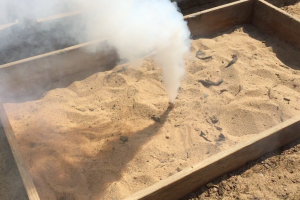
I did not know this when I picked up the book, “Rocket Manual for Amateurs”, by Army Captain Bertrand Brinley. By no means did Brinley down-play safety, but he also believed, “… the rocket itself is merely a tool for teaching, perhaps the most useful one man has ever devised.”
You don’t learn how a car runs from buying a car. The people who truly know how a car works are the people who design and make them. The rocket may be the most useful teaching tool ever, but pulling one out of a box and lighting it on fire does not teach me a whole lot.
To learn what we wanted to learn, we had to start building rockets.
The list of amateur experimental rocket scientists stretches far, but I started by gleaning information from Canadian Richard Nakka. Nakka started experimenting as a teenager in 1972, pulling advice from Rocket Manual for Amateurs. Combining his wisdom with Brinley’s and many others, Andrew and I decided that solid rocket motors with sucrose/potassium nitrate propellant were the best choice for our homemade rockets.
Sugar/KNO3, aka “Rocket Candy,” is easy to obtain, safe and importantly, cheap. For $40, I bought an electric skillet and a pound of potassium nitrate (advertised as stump remover).
With leather gloves, face mask and a heavy jacket, I mixed 17g sugar and 33g KNO3 in water and boiled it off. 45 minutes transformed what looked like crumbly scrambled eggs to burnt peanut butter. A cardboard tube housed the explosive compound, buried half-way in a sandbox.
We learned our first lesson about rocketry that day, and it was about failure. The propellent burned steadily for about two seconds. Then, air pockets caused the fuel to explode, sending a cloud of smoke 30 feet above the backyard.
Success never comes by accident. We needed much more studying and planning before producing a motor that did not explode.
In their first rocket podcast, Andrew Rieker and Bryce Foshee recount rocketry experiences and discuss how to share their passion.
In the next blog post, Andrew and Bryce will discuss the results of early experimentation. In addition, they have decided to start a club open to all high schoolers, the Fresno Christian Rocket Program. For info about applying, contact Bryce Foshee or Andrew Rieker.
For more articles, read Functional Human blog, No. 12-It’s Good to be King and EDITORIAL: Role models guide, influence teens through actions.
Bryce Foshee can be reached via Twitter @brycer_f and via email.
Andrew Rieker can be reached via email.

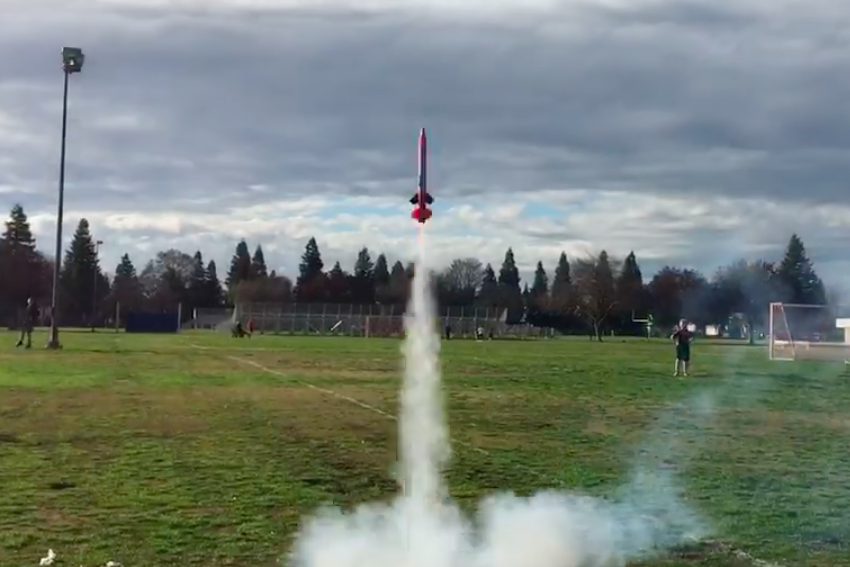



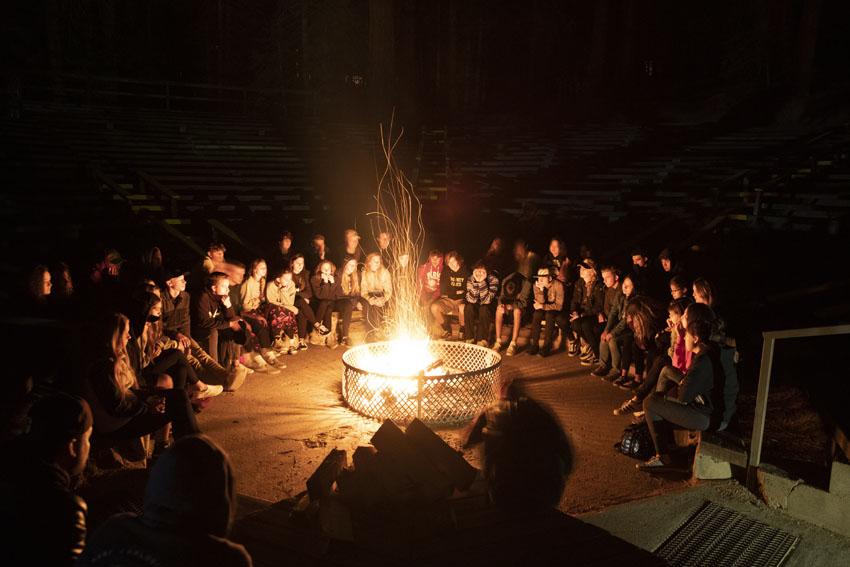
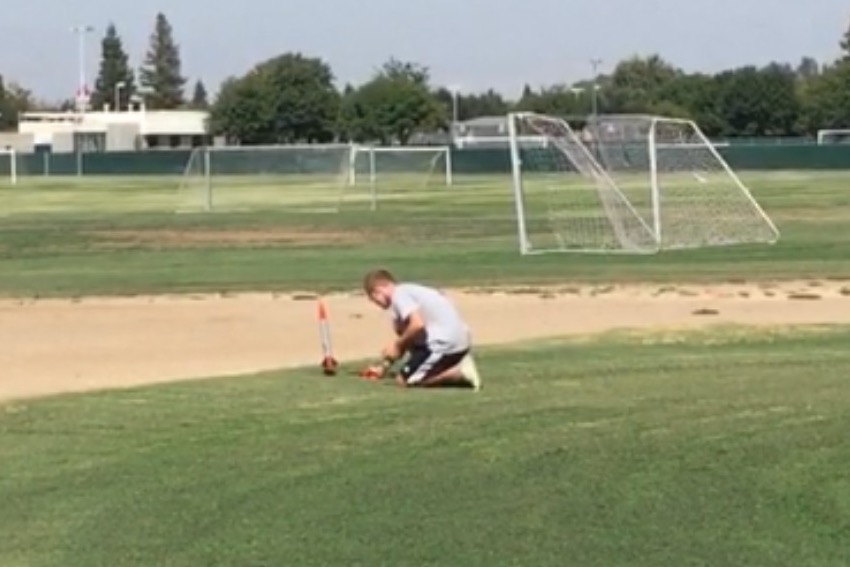

Summer Foshee • Aug 31, 2019 at 9:05 am
Nice article, Bryce. I’m excited to see what Rocket Program will do!